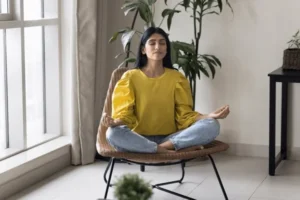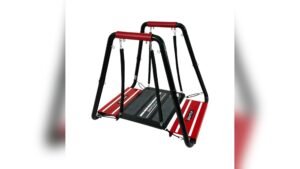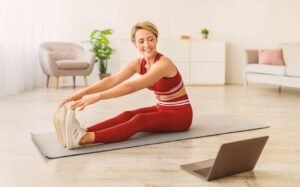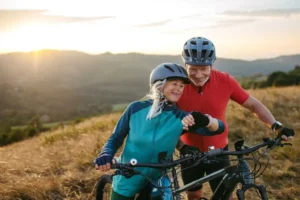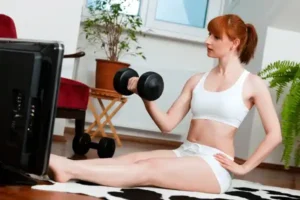Heated Vinyasa Yoga, a dynamic and invigorating practice, has gained popularity for its unique blend of physical and mental benefits. Originating from the traditional Vinyasa style, this form of yoga is performed in a heated room, typically ranging from 85-95°F (29-35°C). The heat not only enhances flexibility but also promotes detoxification through sweating. This practice can be traced back to the early 20th century when yoga masters began experimenting with heat to deepen the practice.
Table of Contents
TogglePhysical Benefits
The physical advantages of Heated Vinyasa Yoga are numerous. The warmth of the room helps to loosen muscles, allowing for deeper stretches and reducing the risk of injury. This increased flexibility can lead to improved posture and alignment. Additionally, the heat elevates the heart rate, providing a cardiovascular workout that can aid in weight loss and improve overall fitness levels.
• Enhanced Flexibility: The heat allows muscles to stretch more easily, increasing flexibility over time.
• Cardiovascular Health: The elevated heart rate during practice provides a cardiovascular workout, improving heart health.
• Detoxification: Sweating helps to flush out toxins from the body, promoting overall health.
• Muscle Strength: The various poses in Vinyasa Yoga help to build and tone muscles.
• Improved Posture: Regular practice can correct postural imbalances and enhance body alignment.
Mental and Emotional Benefits
Beyond the physical, Heated Vinyasa Yoga offers significant mental and emotional benefits. The practice encourages mindfulness and presence, helping to reduce stress and anxiety. The combination of movement and breath work can lead to a meditative state, promoting mental clarity and emotional stability.
• Stress Reduction: The focus on breath and movement helps to calm the mind and reduce stress levels.
• Mental Clarity: The meditative aspects of the practice can enhance concentration and mental clarity.
• Emotional Stability: Regular practice can help to balance emotions and improve overall mood.
• Mindfulness: The emphasis on being present in the moment fosters mindfulness, which can be beneficial in daily life.
How to Prepare for a Heated Vinyasa Yoga Class
Preparation is key to fully enjoying and benefiting from a Heated Vinyasa Yoga class. Proper preparation ensures that you can practice safely and comfortably, maximizing the benefits of the session.
Essential Gear and Clothing

Choosing the right gear and clothing is crucial for a successful Heated Vinyasa Yoga session. Lightweight, moisture-wicking fabrics are recommended to keep you cool and comfortable. A high-quality yoga mat with good grip is essential to prevent slipping due to sweat.
• Clothing: Opt for lightweight, breathable, and moisture-wicking fabrics. Avoid heavy or restrictive clothing.
• Yoga Mat: A non-slip mat is essential to ensure stability during poses.
• Towel: Bring a towel to wipe off sweat and keep your mat dry.
• Water Bottle: Staying hydrated is crucial, so bring a large water bottle to class.
Hydration and Nutrition Tips
Proper hydration and nutrition play a vital role in preparing for a Heated Vinyasa Yoga class. Drinking plenty of water before, during, and after the class is essential to prevent dehydration. Eating a light meal or snack an hour or two before the class can provide the necessary energy without causing discomfort.
• Hydration: Drink at least 16 oz of water before the class and continue to hydrate during and after the session.
• Nutrition: Eat a light meal or snack that includes carbohydrates and protein about 1-2 hours before the class.
• Avoid Heavy Meals: Avoid heavy or greasy foods before the class to prevent discomfort.
Common Poses in Heated Vinyasa Yoga
Heated Vinyasa Yoga incorporates a variety of poses that flow seamlessly from one to another, synchronized with breath. These poses range from beginner to advanced levels, each offering unique benefits.
Beginner Poses
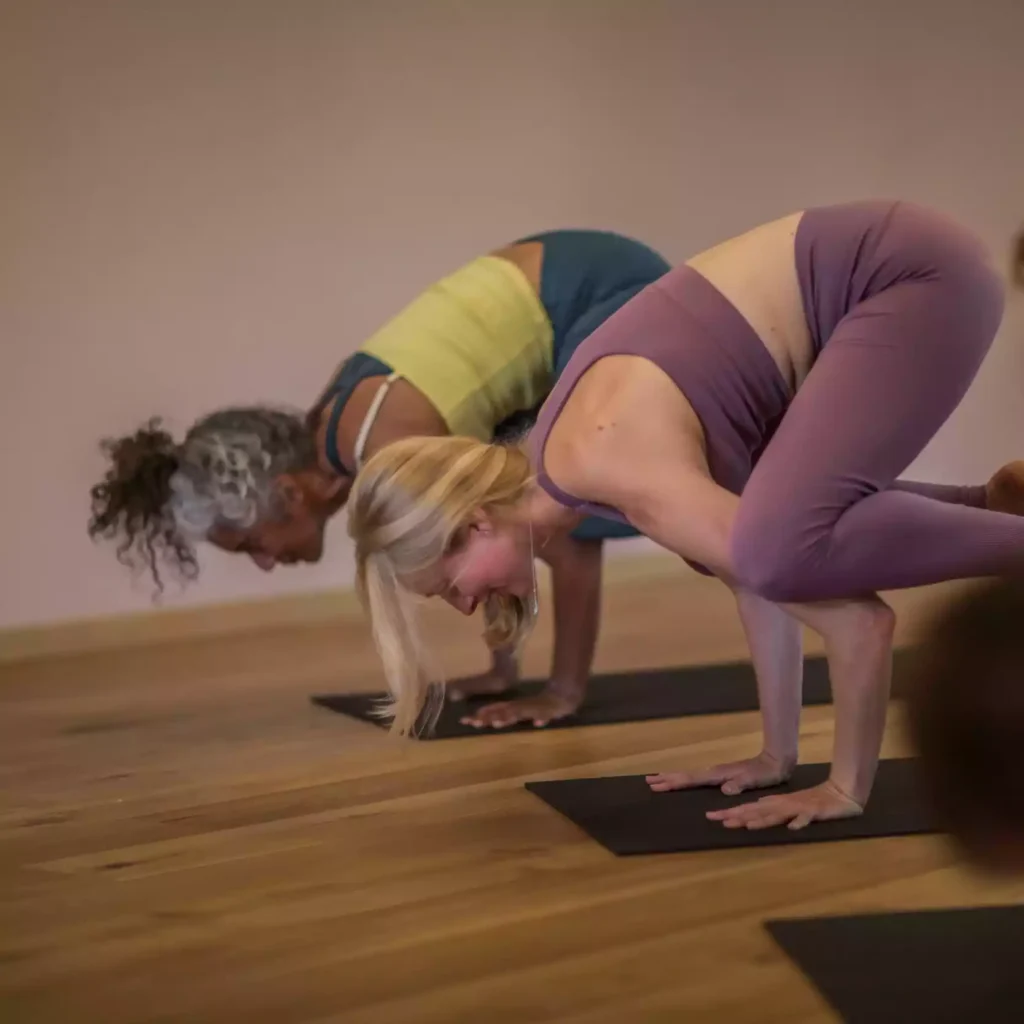
For those new to Heated Vinyasa Yoga, starting with beginner poses can help build a strong foundation. These poses are designed to be accessible while still providing a good workout.
• Downward Dog (Adho Mukha Svanasana): A foundational pose that stretches the entire body and strengthens the arms and legs.
• Warrior I (Virabhadrasana I): Builds strength in the legs and core while improving balance.
• Child’s Pose (Balasana): A resting pose that stretches the back and shoulders, providing a moment of relaxation.
• Mountain Pose (Tadasana): Improves posture and balance, serving as a starting point for many other poses.
Advanced Poses
As practitioners become more comfortable with the basics, they can progress to more advanced poses. These poses require greater strength, flexibility, and balance.
• Crow Pose (Bakasana): A challenging arm balance that strengthens the core and upper body.
• Wheel Pose (Urdhva Dhanurasana): A deep backbend that opens the chest and shoulders while strengthening the legs and arms.
• Headstand (Sirsasana): An inversion that improves balance and core strength.
• King Pigeon Pose (Kapotasana): A deep hip opener that also stretches the back and shoulders.
Safety Tips for Practicing Heated Vinyasa Yoga
Safety is paramount when practicing Heated Vinyasa Yoga. The heat can be intense, and it’s important to listen to your body and practice mindfully to avoid injury.
Understanding Your Limits
Knowing your limits and respecting them is crucial in Heated Vinyasa Yoga. Pushing too hard can lead to injury, so it’s important to practice with awareness and take breaks when needed.
• Listen to Your Body: Pay attention to how your body feels and avoid pushing beyond your limits.
• Take Breaks: If you feel dizzy or lightheaded, take a break in Child’s Pose or step out of the room to cool down.
• Modify Poses: Use modifications or props to make poses more accessible and prevent strain.
Importance of Proper Hydration
Staying properly hydrated is essential in Heated Vinyasa Yoga. The heat and sweating can lead to dehydration, which can cause dizziness, fatigue, and other issues.
• Pre-Class Hydration: Drink plenty of water before the class to ensure you’re well-hydrated.
• During Class: Sip water throughout the class to maintain hydration levels.
• Post-Class Hydration: Continue to drink water after the class to replenish lost fluids.
Frequently Asked Questions about Heated Vinyasa Yoga
What to Expect in a Class
A Heated Vinyasa Yoga class typically begins with a warm-up, followed by a series of flowing poses, and ends with a cool-down and relaxation period. The heat can be intense, so it’s important to pace yourself and take breaks as needed.
• Warm-Up: The class usually starts with gentle stretches and breathing exercises to prepare the body.
• Flowing Poses: The main part of the class involves a series of poses that flow seamlessly from one to another, synchronized with breath.
• Cool-Down: The class ends with a cool-down period, including gentle stretches and relaxation poses.
• Relaxation: The final relaxation pose, Savasana, allows the body to rest and integrate the benefits of the practice.
How Often Should You Practice?
The frequency of practice depends on individual goals and fitness levels. Beginners may start with 2-3 classes per week, gradually increasing as they become more comfortable. Regular practice can lead to greater flexibility, strength, and mental clarity.
• Beginners: Start with 2-3 classes per week to allow the body to adapt to the heat and intensity.
• Intermediate: Increase to 4-5 classes per week as you become more comfortable with the practice.
• Advanced: Daily practice can be beneficial for those looking to deepen their practice and achieve greater benefits.
Relevant Data Table For Heated Vinyasa Yoga:
| Aspect | Details |
| Temperature Range | 85-95°F (29-35°C) |
| Class Duration | Typically 60-90 minutes |
| Common Poses | Downward Dog, Warrior II, Tree Pose, etc. |
| Caloric Burn | Approximately 400-600 calories per session |
| Hydration Recommendation | At least 16 oz of water before and after |
| Clothing | Lightweight, moisture-wicking fabrics |
FAQs:
What should I bring to a heated vinyasa yoga class?
Bringing the right items to a Heated Vinyasa Yoga class can enhance your experience and ensure you are comfortable throughout the session. Here are some essentials:
• Yoga Mat: A high-quality, non-slip yoga mat is crucial to prevent slipping due to sweat. Look for mats specifically designed for hot yoga.
• Towel: A large towel to cover your mat and a smaller towel to wipe off sweat are essential. Some practitioners prefer yoga towels that fit over the mat and provide extra grip.
• Water Bottle: Staying hydrated is key, so bring a large water bottle. Consider a bottle with insulation to keep your water cool throughout the class.
• Lightweight Clothing: Wear lightweight, moisture-wicking fabrics to stay cool and comfortable. Avoid heavy or restrictive clothing.
• Change of Clothes: After a sweaty session, having a change of clothes can be refreshing.
• Yoga Props: Blocks, straps, or other props can be helpful, especially for beginners or those needing modifications.
Is heated vinyasa yoga suitable for beginners?
Heated Vinyasa Yoga can be suitable for beginners, but it’s important to approach it with caution and awareness. Here are some tips for beginners:
• Start Slow: Begin with a few classes per week to allow your body to adapt to the heat and intensity.
• Listen to Your Body: Pay attention to how you feel and take breaks when needed. Child’s Pose is a great resting pose if you need a moment to recover.
• Stay Hydrated: Drink plenty of water before, during, and after the class to prevent dehydration.
• Use Modifications: Don’t hesitate to use props or modify poses to suit your level of flexibility and strength.
• Consult with the Instructor: Let the instructor know you are a beginner. They can provide guidance and modifications to help you practice safely.
How does heated vinyasa yoga differ from regular vinyasa yoga?
Heated Vinyasa Yoga differs from regular Vinyasa Yoga primarily in the temperature of the room. Here are some key differences:
• Temperature: Heated Vinyasa Yoga is practiced in a room heated to 85-95°F (29-35°C), while regular Vinyasa Yoga is typically done at room temperature.
• Sweating: The heat in Heated Vinyasa Yoga promotes sweating, which can aid in detoxification and enhance flexibility.
• Intensity: The heat can make the practice more intense, providing a greater cardiovascular workout.
• Hydration Needs: Due to the increased sweating, staying hydrated is more critical in Heated Vinyasa Yoga.
• Flexibility: The warmth of the room can help muscles stretch more easily, potentially increasing flexibility.
For more detailed comparisons, you can refer to this article.
Can I practice heated vinyasa yoga if I have a medical condition?
Practicing Heated Vinyasa Yoga with a medical condition requires careful consideration and consultation with a healthcare provider. Here are some factors to consider:
• Consult Your Doctor: Before starting Heated Vinyasa Yoga, consult with your healthcare provider to ensure it is safe for your specific condition.
• Inform the Instructor: Let the instructor know about your medical condition. They can provide modifications and guidance to help you practice safely.
• Listen to Your Body: Pay close attention to how you feel during the practice. If you experience any discomfort or symptoms, stop and seek medical advice.
• Stay Hydrated: Proper hydration is crucial, especially if you have a condition that affects your body’s ability to regulate temperature.
• Avoid Overexertion: Practice at your own pace and avoid pushing beyond your limits.
What are the benefits of the heat in heated vinyasa yoga?
The heat in Heated Vinyasa Yoga offers several benefits that enhance the practice:
• Increased Flexibility: The warmth of the room helps to loosen muscles, allowing for deeper stretches and improved flexibility.
• Detoxification: Sweating helps to flush out toxins from the body, promoting overall health.
• Cardiovascular Workout: The elevated heart rate during practice provides a cardiovascular workout, improving heart health.
• Enhanced Muscle Strength: The various poses help to build and tone muscles.
• Improved Posture: Regular practice can correct postural imbalances and enhance body alignment.
• Mental Clarity: The meditative aspects of the practice can enhance concentration and mental clarity.
For more insights into the benefits of hot yoga, you can read this comprehensive guide.
Conclusion
Heated Vinyasa Yoga offers a unique blend of physical and mental benefits, making it a popular choice for many yoga practitioners. By understanding how to prepare, what to expect, and how to practice safely, you can fully enjoy and benefit from this invigorating form of yoga. Remember to listen to your body, stay hydrated, and practice mindfully to make the most of your Heated Vinyasa Yoga experience.
Posts References:
Hot vs. Room Temperature Vinyasa Yoga: What’s the Difference?
Everything you need to know about hot power vinyasa yoga

